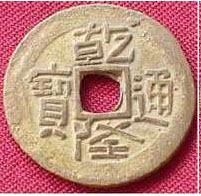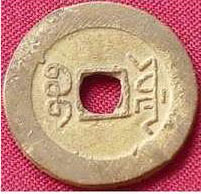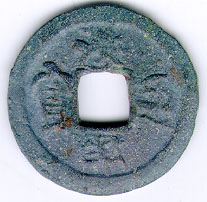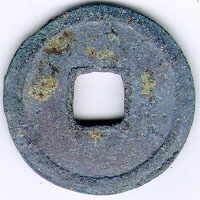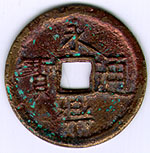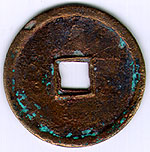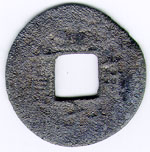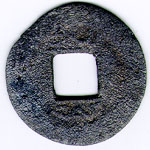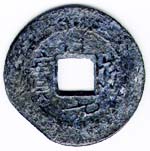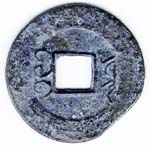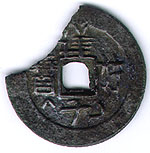|
This Kai Yuan Tong Bao has a fairly orthodox version of the first three
characters, but the Bao character is very different from the norm. It
is based on the famous 7th century Tang
Dynasty coin.
24mm x 1.5 mm
開元通宝 島銭
|
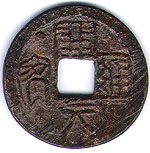 |
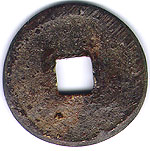 |
|
Notice that this coin is, front and back, almost identical to the one
above.
24mm x 1.5 mm
開元通宝 島銭
|
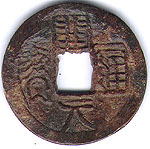 |
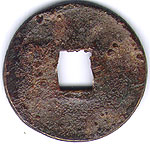 |
|
This Kan'ei Tsuuhou is based on the bunsen type of Japanese coin
first minted in 1668. However, the 'Bun'
character on the back is behind the Tsuu character on the right, rather
than behind the Kan which is the way in the original. It is as if the
reverse had been rotated 90 degrees clockwise. This thought is interesting
because even the center squares of the front and back are not well aligned,
and there may have been something in the manufacturing process of the
mother coin which produced this anomaly.
24.5mm x 1.5 mm
寛永通宝 背横文 島銭
|
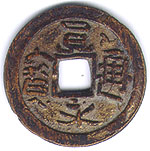 |
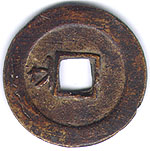 |
|
Notice that this coin is, front and back identical to the one above,
but cast more poorly.
24.5mm x 1.5 mm
寛永通宝 背横文 島銭
|
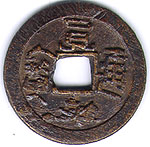 |
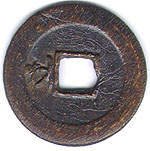 |
|
Chen Long Tong Bao. This is based on the Qing Dynasty Chen Long Tong
Bao of 1736-95. Each of the characters are unorthodox and the Tsuu character
a rectangular grid with horzonal lines on top and bottom, a trait that
is seen in many Indonesian charm coins. This coin has a gloss like graphite.
24mm 1.2 mm
乾隆通宝 島銭
|
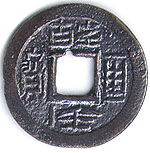 |
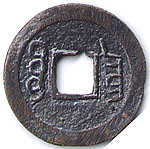 |
|
Chen Long Tong Bao. This is also based on the Qing Dynasty Chen Long
Tong Bao of 1736-95. However this coin is not identical to the one above.
The characters are blockish and angular but more orthodox in shape. The
Manchurian writing on the back was minted upside down.
24.2 mm x 1.5 mm
乾隆通宝 島銭
|
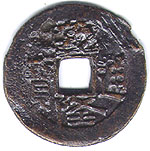 |
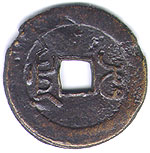 |












